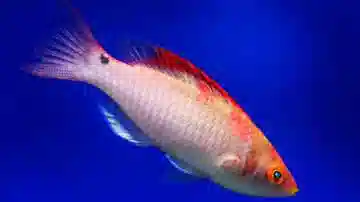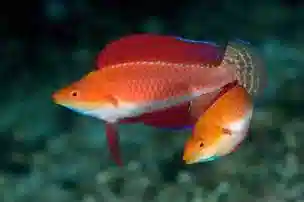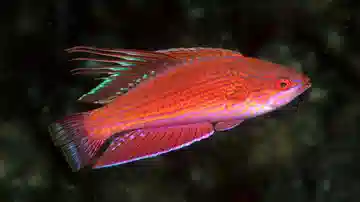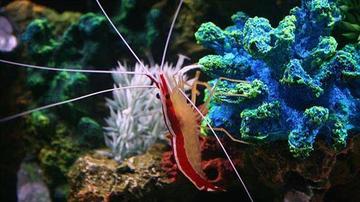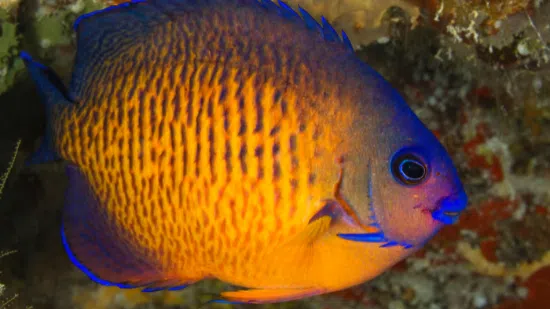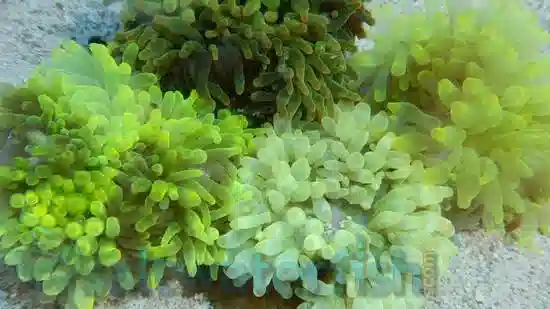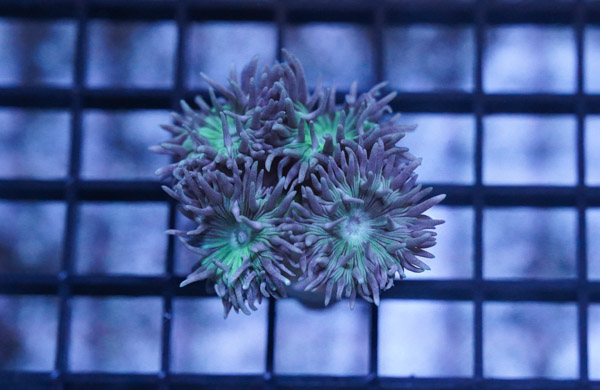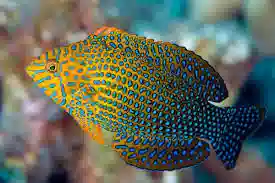Potters Wrasse
Macropharyngodon geoffroyi
(0 Reviews)
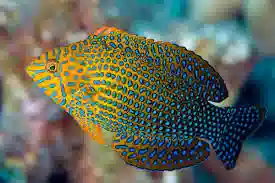
Potters Wrasse
Macropharyngodon geoffroyi
(0 Reviews)
{{ item.name }}
Size: {{ item.extra_field_3 }}
${{ getFormattedPrice(item.saleprice) }} ${{ getFormattedPrice(item.price) }}
Free Shipping
With
$199.00
or more in Marine Life.
More details...
Care Facts
There are no key facts available for this product.
Potter's Wrasse, Macropharyngodon geoffroyi, is also known as Geoffroy's Wrasse, Potter's Leopard Wrasse, or the Shortnose Wrasse. Potter's Wrasse has a light orange colored body with blue accents. Potter's. They are best kept in tanks with ample amounts of rock work for them to hide in and at least two inches of soft sandy substrate. Tanks should also have a securely shut lid to prevent escapes. Multiple Potter's Wrasses can be in the same tank. This is best done with multiple females and one male.
The Potter's Wrasse Care Guide
The Potter's Wrasse (Macropharyngodon geoffroyi) is a fascinating addition to any saltwater marine aquarium, valued for its vibrant colors, intriguing behavior, and relative ease of care. Below is a comprehensive guide to keeping this species, covering various aspects from habitat to tank requirements.
The Potter's Wrasse Habitat:
The Potter's Wrasse is native to the tropical Indo-Pacific region. It inhabits coral reefs, lagoons, and rocky areas with plenty of hiding spots. It is often found in shallow waters ranging from 3 to 50 meters.
The Potter's Wrasse Reef Compatibility:
The Potter's Wrasse is reef-safe as it rarely bothers corals or other invertebrates. However, caution should be exercised with small crustaceans like shrimp, as they may become prey.
The Potter's Wrasse Size and Lifespan:
This species typically reaches a size of about 4-5 inches (10-13 cm) in length when fully grown. They can live for 5 to 7 years or even longer in captivity with proper care.
The Potter's Wrasse Diet in Captivity:
Potter's Wrasse are carnivorous and feed primarily on small invertebrates like copepods, amphipods, and bristle worms. In captivity, they readily accept a varied diet of high-quality frozen and live foods such as mysis shrimp, brine shrimp, and finely chopped seafood. Offering a diverse diet is essential to ensure proper nutrition and health.
The Potter's Wrasse Aquaculture and Availability:
While Potter's Wrasse are less commonly aquacultured than other marine species, they are occasionally available to hobbyists from reputable sources. Always ensure you purchase from responsible and sustainable suppliers like Saltwaterfish.com to support the aquaculture efforts and reduce the impact on wild populations.
The Potter's Wrasse Compatibility with Other Fish and Invertebrates:
Potter's Wrasse generally have a peaceful temperament, making them compatible with many tank mates. However, they may exhibit aggression towards other wrasse species or similarly shaped fish. Ideal tank mates include peaceful reef fish such as gobies, blennies, clownfish, and smaller tangs.
The Potter's Wrasse Sexual Dimorphism:
Male and female Potter's Wrasse display distinct differences in coloration. Males typically exhibit more vibrant colors and may have elongated dorsal and anal fins, while females tend to be less colorful with rounded fins.
The Potter's Wrasse Juvenile to Adult Coloration Changes:
Juvenile Potter's Wrasse often has duller coloration than adults. Their colors become more vibrant as they mature, with males developing striking blue and yellow markings along their bodies and fins.
The Potter's Wrasse Temperament:
Potter's Wrasse are generally peaceful but may become territorial towards conspecifics or similarly shaped fish. Providing plenty of hiding spots and space can help mitigate aggression.
The Potter's Wrasse Tank Requirements:
- Minimum Aquarium Size: A tank of at least 70 gallons is recommended for a single Potter's Wrasse. Larger tanks provide more swimming space and reduce territorial behavior.
- Water Conditions:
- pH: 8.1-8.4
- Salinity: 1.020-1.025
- Water Temperature: 75-82°F (24-28°C)
- Water Flow: Moderate to high flow is preferred to mimic their natural habitat.
The Potter's Wrasse Other Common Names:
The Potter's Wrasse may also be known as the Geoffroy's Wrasse or the Blackspotted Wrasse.
The Potter's Wrasse Five Compatible Tank Mates:
- Percula Clownfish (Amphiprion percula)
- Royal Gramma (Gramma loreto)
- Firefish Goby (Nemateleotris magnifica)
- Banggai Cardinalfish (Pterapogon kauderni)
- Yellowtail Damsel (Chrysiptera parasema)
Why Buy the Potter's Wrasse from Saltwaterfish.com:
Saltwaterfish.com is committed to providing sustainably sourced marine life, including the Potter's Wrasse. With their dedication to quality, health, and customer satisfaction, purchasing from Saltwaterfish.com ensures you get a healthy specimen while supporting responsible aquaculture practices.
In conclusion, the Potter's Wrasse is an attractive and fascinating species suitable for various saltwater aquarium setups. With proper care and consideration of tank mates, it can thrive and become a beautiful addition to any marine aquarium.
Currently Potters Wrasse does not have any reviews.


